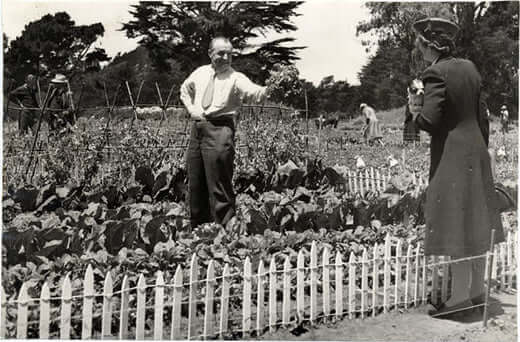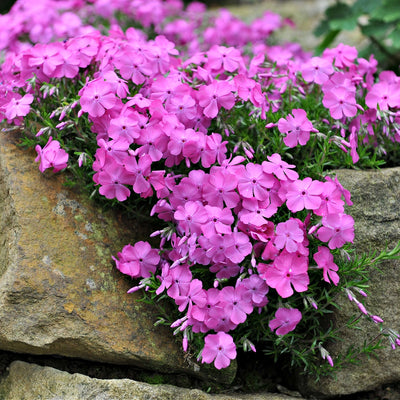During World Wars I and II people were told to grow their own food to help their communities which is where the idea of the victory garden came from, a greater desire for independence and healthier living is reflected in the resurgence of victory garden ideas today. Growing your own food can be enjoyable and attractive whether you have a big backyard or a small space Victory Garden on your rooftop.
These days, victory gardens aren't just for growing food. By mixing decorative plants like Creeping Phlox and Sweet Violet with edible plants, they get the best of both worlds. These plants bring in pollinators, make gardens look nicer and support a small environment that works with the idea of sustainable living.
Why a Victory Garden Matters Today
There's more than nostalgia behind the increased interest in the victory garden. It's about getting back control of food sources, becoming less reliant on commercial farming and encouraging people to be responsible with the environment.
The victory garden benefits go far beyond the produce, including enhancing mental health and educating kids about where food comes from. These gardens stand for hope, community and the simple pleasure of taking care of living things.
Planning Design - Small Space Victory Garden Design Tips
You don't need acres of land or complicated setups to make a small space victory garden. The key is well thought out design and making good use of room. First find places that get at least six hours of sunshine every day. You can grow plants on even the smallest patios or porches with raised beds, containers, or vertical planters.
Here are some design tips for your victory garden ideas:
- Pick plants that can do more than one thing: For example grow lettuce or kale with flowering plants like Sweet Violet to draw pollinators.
- Make use of space up high: Beans, peas and other vegetables that climb save ground room.
- Rotate crops with the seasons: To get the most produce, plant vegetables that grow quickly after you gather early crops.
- Add beauty: Use Creeping Phlox to line the edges to add colour and stop deterioration.
- Putting purpose and style together will make sure that your victory garden is useful and attractive all year long.
Benefits of a Victory Garden for Family, Food Ecology
Numerous and far reaching victory garden benefits exist. Families can get fresh, organic food from these fields and they also save money on groceries. When you grow your own veggies, you can decide what goes into them and you can avoid the chemicals and preservatives that are in many store bought foods.
- In terms of the environment, victory gardens help keep things going. They lower the amount of carbon dioxide that is released when food is transported and promote composting, water saving and biodiversity.
- Even victory gardens in public spaces can be used as educational tools to inform locals about the value of sustainable living, the state of the local food supply and soil health.
- Tomatoes, carrots, beans, lettuce and herbs are just a few of the most popular Victory Garden vegetables. These are good for you, easy to grow and good for small gardening or containers.
By drawing good bugs, ornamentals that are good for pollinators, like Larkspur Delphinium improve both yield and garden health.
Sustainability and the Modern Victory Garden
- Closed loop environments are at the heart of today's victory garden ideas. Composting yard waste, using rain barrels to save water and using organic fertilisers instead of synthetic ones are all ways to do this.
- Putting Creeping Phlox and Sweet Violet in your veggie beds will not only make them look better, but they will also help keep the soil stable and keep pests away.
- The modern victory garden is one of a kind because it combines ornamentals with food. It's useful, eco friendly and beautiful all at the same time.
- Gardeners in cities can also take part and you can grow healthy food in rooftop gardens and on balconies or plots that are shared by the community.
These projects show that victory gardening is not about how big the area is - but about how committed people are to sustainability and community.
Victory Gardens and Mental Well Being
- Knowing that gardening can lower stress and boost your happiness and help you become more mindful. You can get back in touch with nature by working on your victory garden outside.
- Families often enjoy growing their own food together which makes it a fun way to spend time together and teach kids about nature's processes.
- A small space victory garden can be helpful for older people or people who live in cities because it gets them moving and gives them a sense of success.
It can be very satisfying and proud to see seeds grow into healthy plants.
Learn More about Victory Gardening
You can find useful information from gardening.org if you're motivated to start your own garden or help with victory gardens in public spaces. TN Nursery has many plants, such as perennials and flowering partners like Sweet Violet and Creeping Phlox, that can help you make your own beautiful and productive victory garden.
FAQs
What is a Victory Garden?
A victory garden is a garden in your home or in your community where people grow food to be self sufficient and last for a long time.
Who would plant a victory garden?
Anyone can! One can be grown by families, schools and groups to get fresh food and make the area more resilient.
How to grow a victory garden?
Start with simple victory garden vegetables, arrange your garden so that it gets plenty of sun and add flowers that are good for pollinators for harmony and beauty.
What are the main principles of the victory garden?
Independence, long term living, society and a link to nature.
How to plant a victory garden?
Put your garden in a sunny spot, add compost to the soil to make it better and plant a variety of veggies, herbs and flowering plants with them.




